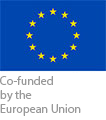The impact of counterfeiting on online consumer rights in Europe.
Last updated on 15/03/2017.
The risks of buying counterfeits on the Internet, and tips from the ECC-Net for consumers in Europe who want to avoid unpleasant surprises due to these products.
March 15 is the World Consumer Day. At this special occasion, the European Consumer Centres Network (ECC-Net) launches its report ‘The impact of counterfeiting on online consumer rights in Europe. The risks of buying counterfeits on the Internet, and tips from the ECC-Net for consumers in Europe who want to avoid unpleasant surprises due to these products’. Though having traditionally targeted the luxury market, counterfeit products have now touched all consumer products such as medicine, cosmetics, children’s toys, shoes or automobile parts and are easily accessible thanks to online commerce. These online bargains seem incredibly attractive. ECC-Net advises not to buy counterfeit goods! Fake products may pose health, safety and financial risks to consumers and expose them to different sanctions in all EU countries. To help consumers not to be trapped, ECC-Net publishes an online brochure with 10 tips on how to avoid buying fake products on the Internet.
While surfing the Internet looking for a bargain, chances are high that you come across very attractive offers which might be too good to be true. These products are most likely imitations of brand products. ECC-Net warns: buying fake products on the Internet is a bad idea. It explains why and how to avoid and what to do when you are trapped.
Buying counterfeit goods online. What are the risks?
ECC-Net receives complaints daily from consumers who, either consciously or not, purchased counterfeit items. Why? Consumers who buy fake products can be exposed to different risks such as:
- The quality of counterfeit products is not guaranteed. They may pose safety or health risk to consumers. Toys, medicine and cosmetics may contain harmful ingredients.
- Customs may intercept and destroy packages containing counterfeit goods. By consequence, you don’t receive the order you already paid for.
- Right holders may bill the costs related to the destructions of the fake goods.
- Who can you turn to when your counterfeit products become defective? Traders who sell fake goods are not prone to respect your guarantee rights.
Example
A legal representative of a right holder contacted a Belgian consumer who had bought a fake jersey of a famous football team for $62. The consumer argued that this was a reasonable price, from a decent website, and that there was nothing really suspicious about this site. He could prove that the official price at that time (end of season) was comparable, and that the website “looked” professional. The legal representative replied that if the name of the website included “outlet, shop or shirts”, this made the products suspect. The consumer contacted ECC Belgium with this problem. After contacting the legal representative and discussing the legal framework, the legal representative dropped the claim against the consumer.
10 ECC-Net tips on how you can avoid buying fake products on the Internet
You want to be sure you aren’t buying counterfeit products? Check out the 10 ECC-Net tips.
- Check the identity of the seller
- Search other consumers’ reviews
- Check whether the website benefits from a trust mark
- Assess the general layout of the website
- Check your consumer rights on the trader's website
- Check the picture of the product
- Watch the price of the good
- Check the official website of the brand for authorized and black-listed sellers
- Pay with a secured means of payment
- Pay attention to refurbished products
The online brochure from the ECC-Net ‘Is it safe to buy counterfeit goods?’ explains every tip in details. A video summarising these 10 tips will be released on social media in order to make this information more accessible to consumers.
What to do in case you did buy counterfeit goods?
Did you buy fake products? Here’s what you can do to try to get your money back.
- Contact the seller in writing. Explain that your order has been confiscated by customs, that you don’t wish a replacement product and thus claim a reimbursement of the total price.
- Did you pay by credit card? Contact your bank or card issuer and claim your money back via the charge back procedure.
- Did the right holder claim for compensation? Explain in writing that you purchased in good faith and for personal use and contest the claim.
With its report ‘The impact of counterfeiting on online consumer rights in Europe’ ECC-Net wants to empower all parties, from traders to authorities but especially consumers who shop online.


